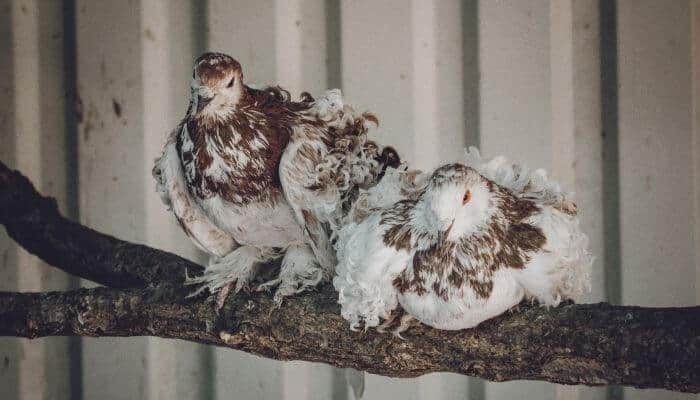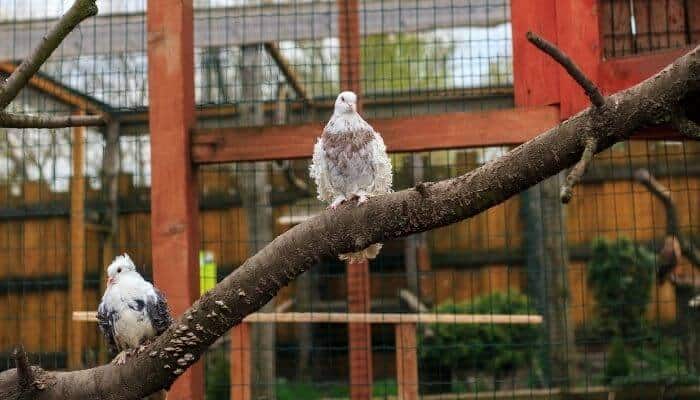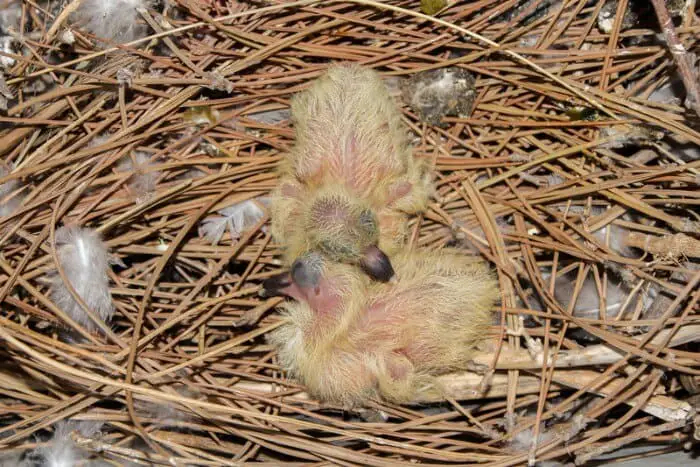Creative by selective breeding over many years, the Frillback is a fancy pigeon.
The name gives a major hint as to their appearance – this pigeon has decorative frills (or curls) on the wing shield feathers.

The frills should be very curly!
Frillback Pigeon Origins
The Frillback is an ancient breed and is known to have been among the pigeons kept by Charles Darwin.
Their precise origin is unknown, but the most accepted theory is that they come from the ancient region of Asia Minor (also known as Anatolia, today this corresponds to an area covering Turkey, Greece, Kurdistan, Armenia and what is known as Assyria – parts of northern Iran, Iraq and Syria).
Although nice to keep as a pet, it is very much a show bird, especially in the USA where there are strict standards.
Frillback Pigeon Appearance
The Frillback has, as you may expect, frilly feathers on its back that looks like small, crimped feathers, almost as if they have been permed.
The pigeon also has feathers covering its feet that look reminiscent of fur and also distinct ridged feathers on its tail and near the ends of wings.

The feathers around the neck are distinctly separated – a little like when you go to the hairdresser and ask them to feather your hair.
Though the crest type is shell, there are several varieties where the Shell crest is almost non-existent.
Frillback Colouring
Frillbacks come in these varieties:
- Pattern – Yellow mottle, rosewing, recessive red mottle and whiteside.
- Self – black, white, recessive red and yellow.
- Grizzle – yellow, red, blue and silver.
- Shield Marked – yellow, red, blue-black Bar, mealy ash-red bar, silver-dun bar, and ash-cream bar.
- ARCP – any rare color pattern
- ARC – any rare color
The most commonly seen colors are blue, which consist of very dark blues and blacks, and yellow, which consist of white and varying shades of light brown.
Less common are the completely white varieties and other varieties that are just one color.
Ironically, this is not because the white bird has recessive traits, it is because two white birds often don’t create white offspring.
Their Famous Frilly Feathers
A Frillback, given plenty of space to move and fly around, and fed well, will grow a healthy bush of curly feathers.
There is no way to make a poorly frilly bird more frilly, but wider open spaces and a good diet can help ensure minimal damage to the bird which leads to a fuller batch of curly feathers.
Their appealing appearance makes them ideal show birds that require very little preparation because if your bird doesn’t look good, then there isn’t much you can do about it.
The only downside to giving your birds plenty of space is that white-tailed varieties may dirty up their tails a little, requiring you to clean them the day before showing.
Be very careful giving your pigeon a bath unless you know what you are doing.
Also, give very dark birds a nice open space with shade if you live in an area with very strong sunlight.
Feather bleaching is not a problem at all thanks to the thick pigment in the feathers, but constant exposure to very strong sunlight will denature the feathers, making the colors appear a little less concentrated.
Plus, forcing dark-coloured birds to stay out in strong sunlight will quickly lead to discomfort.
Breeding The Frillback
Though there are probably three genes involved in the breeding of curly feathered birds such as the Frillback, the two that have been identified are two partially dominant morphological modifier genes with the symbols “Cu1” and “Cu2.”
These genes cause an uneven level of growth on one side of the feather, which creates the classic Frillback curl.
The white Frillback is not recessive pied. It is ash red, two parts grizzle with spread factor, which is why they tend to have orange eyes.
It can be confusing when breeders mate two white birds to receive a brown-looking bird, and when other colored birds drop a pure white bird without warning.
The moral of the story being that even two very similar-looking birds can produce a fairly rare pigeon.
Getting any sort of fancy pigeon to start breeding can be tricky, but they tend to start when the days get longer.

As a result, things like automated flood lights that come on at night may cause breeding problems.
Consider keeping your males and females separated for a few months before trying again, and do not have your birds create more than three clutches per year.
Character Of The Frillback
You may wonder if your Frillback pigeons can fly as they hop around your courtyard, but it seems that even though they can fly just fine, they are happier walking around.
They are not a skittish variety of bird, and so can make very good and affectionate pets if they are normalized from a young age.
On the other hand, birds that have not been handled from a young age may become prone to stress-related ailments.
If you are planning to show your bird, then expose it to show cages at an early age and in small doses.
For example, put it in the cage in a safe and quiet environment while you nip to the shops.
Slow and careful exposure to the show scene will help stop the bird from panicking at events.
